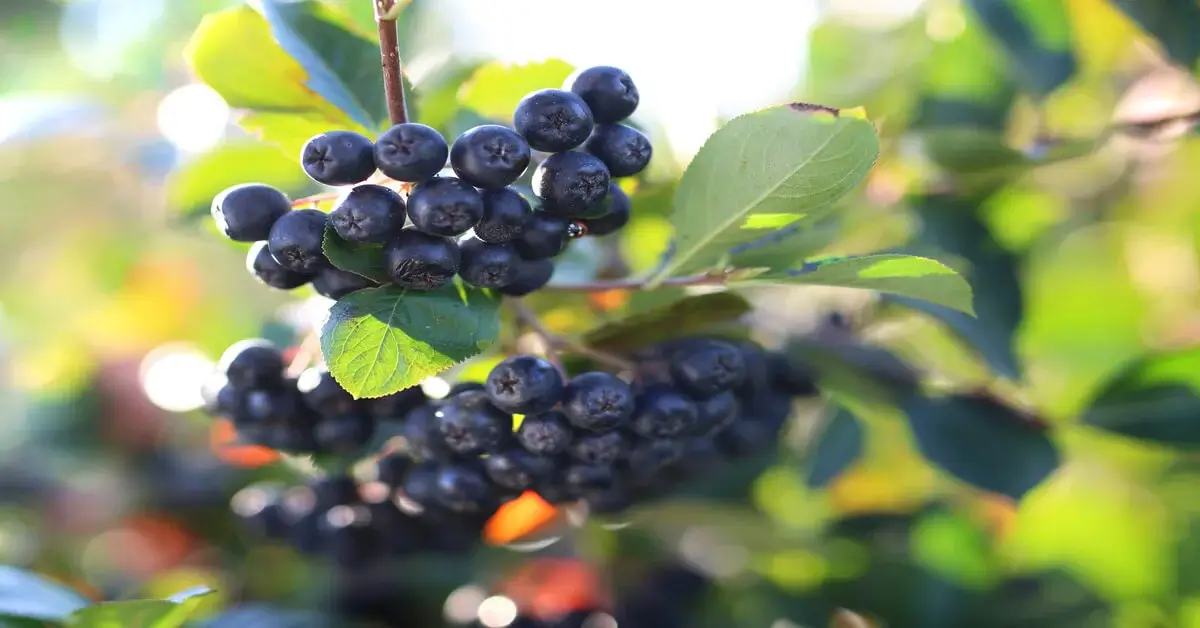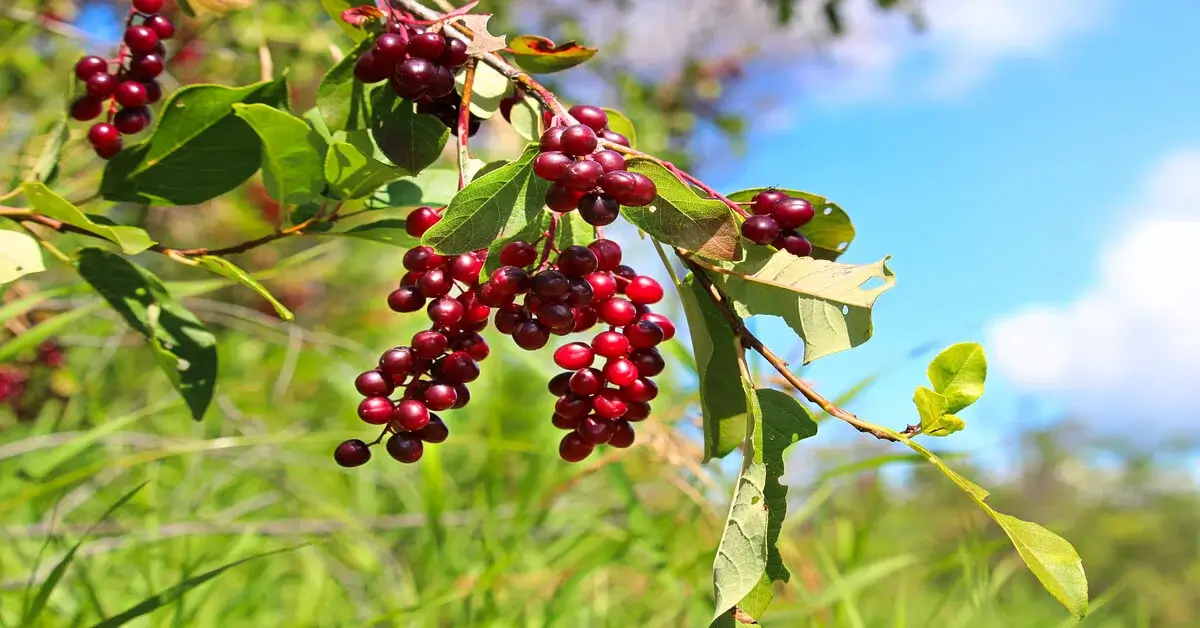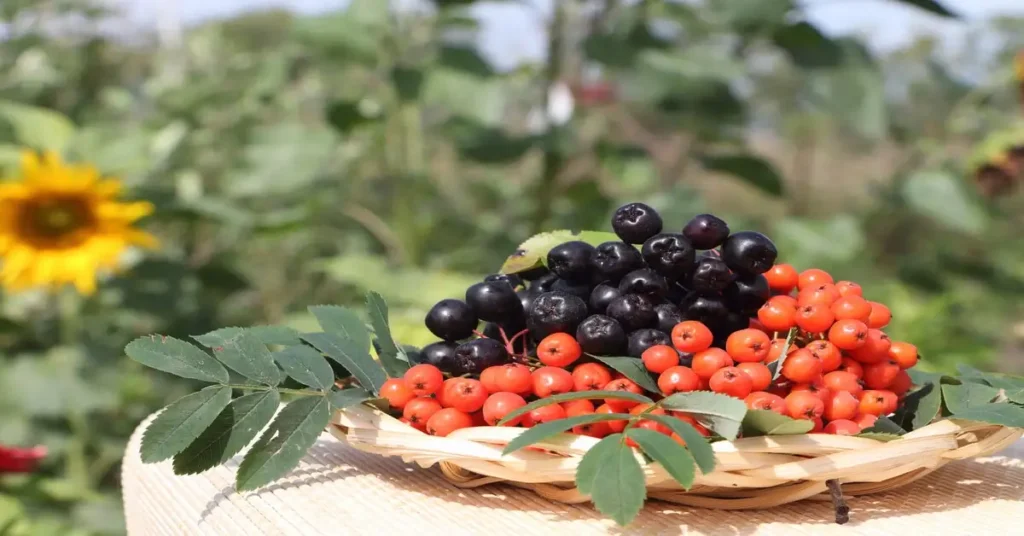Understanding the dissimilarities between chokeberry and chokecherry can be challenging, given their common names. Chokeberries and chokecherries are different plant species belonging to other genera, each with unique characteristics.
The chokeberry is a plant from the Aronia genus, with the black chokeberry or Aronia melanocarpa as the most widely recognized species. Native to North America, chokeberries are not poisonous, bearing fruits that are safe to eat.
As a deciduous shrub, the chokeberry plant grows well in zones 3 through 8, making it a versatile addition to any vegetable garden or horticulture project.
On the other hand, chokecherry, also known as Prunus virginiana or Virginia bird berry, is a member of the Prunus genus, which houses other stone fruits like cherries, plums, and peaches. It’s a shrub species from the Rosaceae family, often grown as an ornamental or forage plant.
Although chokecherry fruits are generally edible, parts of the plant, such as the bark of the chokecherry and seeds, contain cyanide, making them potentially poisonous to humans.
Chokeberry Plant: Antioxidant Powerhouse

The chokeberry bush stands out for its attractive fall color, ornamental appeal, and clusters of small, astringent berries known as Aronia. These berries, particularly black chokeberries, are edible fruit that packs a significant health punch.
Chokeberries are rich in antioxidants such as anthocyanin. Their ORAC (Oxygen Radical Absorbance Capacity) score[1], a measure of antioxidant strength, is among the highest in berries. The health benefits of antioxidants are well-documented, including combating harmful free radicals and bolstering the immune system.
Chokeberry plants, often displaying chokeberry flowers in spring, also have a functional role in horticulture. They are commonly grown for their vivid fall foliage, enhancing landscape aesthetics.
Chokecherry Plant: More Than Just a Berry

The chokecherry plant, distinguished by its sour cherry-like fruits, belongs to the rose or Rosaceae family. Chokecherries grow in clusters similar to chokeberries, lending a distinctive charm to chokecherry bushes.
The fruits of chokecherry, although bitter-berry-like, are edible when cooked, commonly transformed into chokecherry jam, jelly, or syrup. However, recipes often require plenty of sugar to offset the naturally astringent taste.
Yet, one must tread with caution when consuming chokecherry fruits. Like the leaves and bark, the chokecherry seeds contain hydrocyanic acid, a compound that can release cyanide[2]. Although segmented stomachs in birds and other animals can handle this, it can be toxic to humans if ingested in substantial amounts.
Chokeberry Vs. Chokecherry: Key Differences
While both are native to parts of North America and provide food for birds and other wildlife, the chokeberry and chokecherry serve different purposes for human use.
Due to their high antioxidant content, Aronia berries, or chokeberries, find their way into various health-focused products. Apart from eating fresh fruit, chokeberries can be used to make jams and are often seen in health supplements or juices.
Chokecherries, in contrast, are less commonly eaten raw due to their astringent taste and potential toxicity. Most often, chokecherries are used in cooking or baking, where heat can break down the cyanide in the seeds. For safety, it is crucial to avoid consuming the seeds.
Conclusion
Each plant holds its allure in the final tally, whether it’s chokeberry or chokecherry. Both provide vibrant visual appeal, and their fruits offer unique culinary and health benefits.
While chokeberries boast an antioxidant-rich profile, chokecherries bring a traditional flavor to cooked recipes. Both are versatile shrubs growing well in varied conditions, adding value and beauty to our environment. So next time you spot a chokeberry bush or a chokecherry tree, you’ll know exactly what you’re looking at and appreciate these plants’ merits.
Remember, when foraging or gardening, always identify plants correctly before consuming their fruits. And above all, enjoy the process of getting to know the wonderful world of chokeberries and chokecherries.
References:
[1] Guohua Cao, Helaine M. Alessio, Richard G. Cutler, Oxygen-radical absorbance capacity assay for antioxidants, Free Radical Biology and Medicine, Volume 14, Issue 3, 1993, Pages 303-311, ISSN 0891-5849.
[2] U.S. Department of Agriculture, Natural Resources Conservation Service. (April 2003). Plant fact sheet: Chokecherry Prunus virginiana L. Retrieved July 18, 2023.

